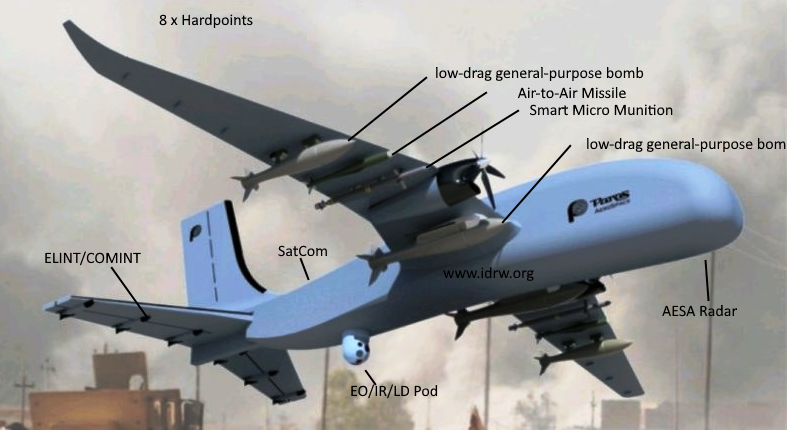SOURCE: AFI

As unmanned aerial vehicles (UAVs) reshape the global defense landscape, India is strategically positioned to enhance its indigenous UAV capabilities. The increasing reliance on UAVs, especially in the Medium Altitude Long Endurance (MALE) and High Altitude Long Endurance (HALE) classes, highlights the need for advanced, locally-developed systems that can meet the evolving demands of modern warfare.
Given the rapid advancements in UAV technology and the substantial potential of India’s private sector, it is crucial for the country to actively encourage private defense companies to take the lead in developing MALE and HALE UAVs.
India’s private sector has already demonstrated its capacity for technological innovation in several high-tech domains, such as aerospace, electronics, and artificial intelligence. When it comes to UAVs, these private enterprises have the advantage of agility—allowing them to innovate faster than state-run institutions, which may face bureaucratic delays.
The rapid evolution of UAV technology requires flexible and adaptive development cycles. In contrast to traditional defense procurement processes that can take years, private companies have the ability to expedite research and development, offering the armed forces cutting-edge UAV systems in shorter timelines. By leveraging private companies’ tech-driven mindset, India can accelerate its entry into the global UAV market.
India’s defense startup ecosystem has witnessed significant growth, with numerous startups focusing on niche technologies like UAVs, AI, sensor integration, and advanced data analytics. Startups like NewSpace India, ideaForge, and others have already developed UAV platforms for defense and surveillance. These companies can lead the charge in developing advanced MALE and HALE UAVs, which are pivotal for surveillance, reconnaissance, intelligence, and strike capabilities.
The Indian military’s growing demand for UAVs, especially in the MALE and HALE categories, is currently being met by foreign imports or collaborative ventures. Israel’s Heron MkII and Hermes 900, for instance, remain a cornerstone of India’s MALE UAV capabilities, and plans are in motion to acquire more UAVs from the United States. However, relying on foreign suppliers poses strategic challenges, especially during times of geopolitical tension.
By encouraging private sector involvement, India can significantly reduce its dependence on foreign OEMs (Original Equipment Manufacturers) and boost indigenous capabilities. A robust domestic UAV sector can tailor these platforms to meet India’s specific operational requirements, from high-altitude border surveillance to maritime reconnaissance over the Indian Ocean. Furthermore, indigenously-developed UAVs will provide the military with greater flexibility for upgrades and modifications, adapting to mission-specific needs without the restrictions of foreign technology transfer agreements.
India has already demonstrated its potential as an exporter of defense equipment, with countries in Southeast Asia and Africa showing interest in India-made weapons and platforms. A thriving indigenous UAV industry—spearheaded by private firms—can position India as a significant player in the global UAV market, especially among developing nations looking for cost-effective solutions.
Countries are increasingly seeking indigenous technologies to strengthen their own military-industrial complexes. If Indian private firms develop cutting-edge MALE and HALE UAVs, they can tap into these markets, creating a dual benefit: enhancing India’s defense export revenues while strengthening diplomatic ties with partner nations.
While the public sector has made significant contributions to India’s defense, its capacity to keep pace with evolving UAV requirements remains limited. Organizations like Hindustan Aeronautics Limited (HAL) and the Defence Research and Development Organisation (DRDO) have focused primarily on manned aircraft and larger, complex projects, with comparatively fewer resources allocated toward UAV development.
By allowing private companies to take the lead in UAV production, India can relieve the pressure on these state-run institutions, which are already burdened with a wide range of defense projects. The private sector’s participation will allow for faster execution and innovation while ensuring that state-run enterprises can focus on other critical areas of national defense.